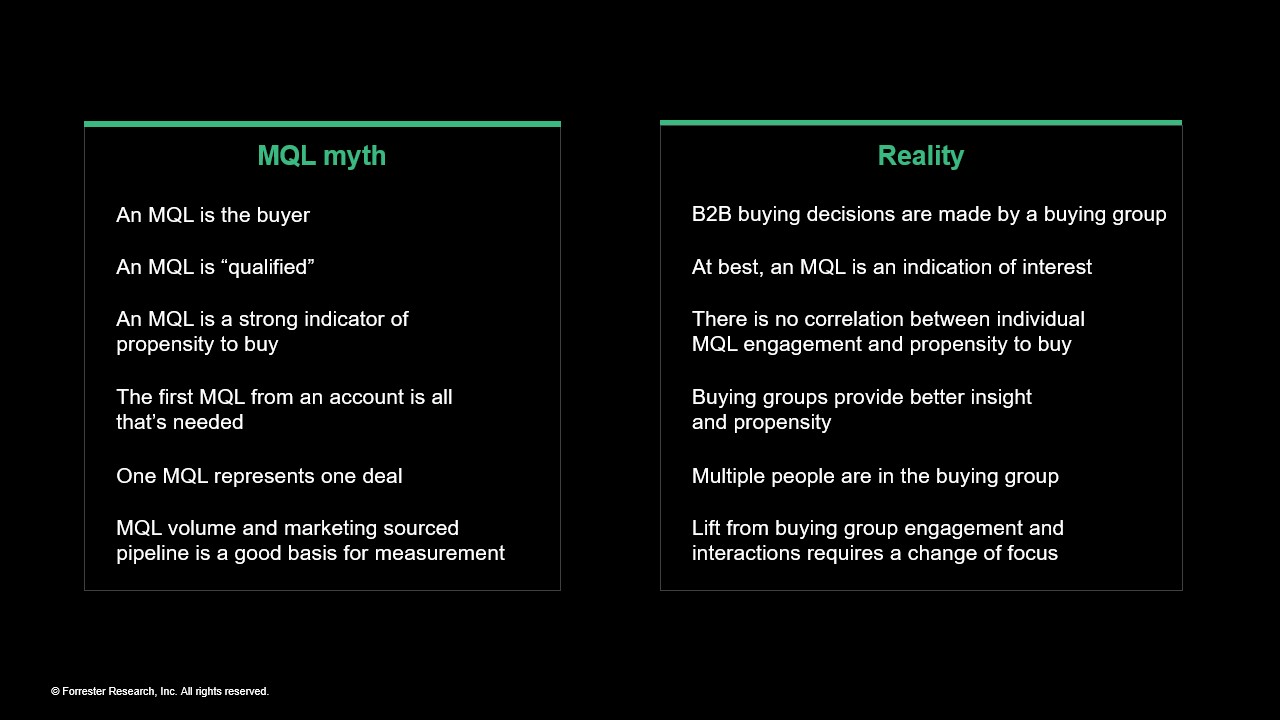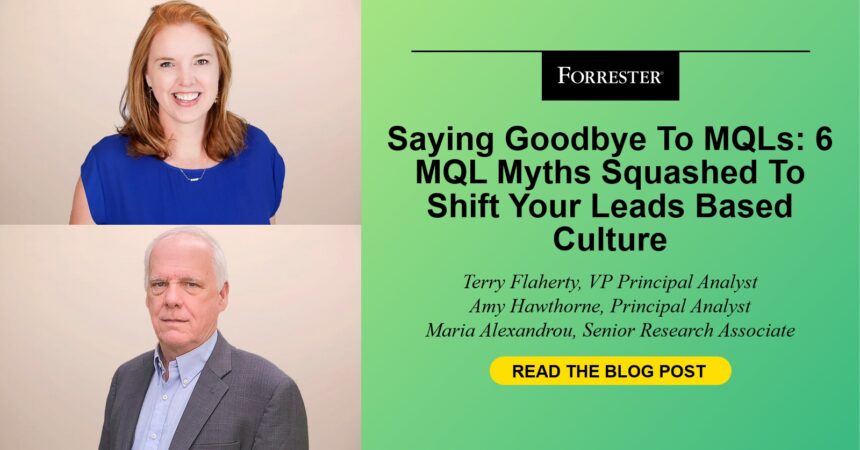This blog post is part of the Saying Goodbye to MQLs blog series, where we answer your questions related to making the shift from leads to buying groups and opportunities.
ne of the primary concerns for organizations contemplating the transition to buying groups is the deep-rooted integration of MQLs within the company culture. MQLs have been ingrained in our vocabulary for over 20 years, serving as a key performance metric, guiding executive decision-making, and at the route of our conversations and subsequent actions with sales teams. It’s also at the core of training of revenue development reps (RDRs). Yet if you go to three people in your organization and ask them the definition of an MQL, we guarantee that you’ll get three different answers.
With all this in mind, there’s just no sugarcoating it: This is the most difficult challenge to overcome in the revenue transformation process. So how can you help your organization leave the MQL culture behind?

Understand That Your Devotion To MQLs Isn’t Helping You Today or In The Long Run
MQLs are a flawed metric: Fewer than 1% of leads make it from the top of the funnel to the bottom of the funnel, and this is not getting us to the end goal of closed/won deals. There are better alternatives to the MQL, and now is the time to get on board and embrace the change of aligning our sales and marketing processes to how our buyers buy today: in buying groups.
Several myths about MQLs affect an organization’s readiness to transition to buying groups and opportunities, so it’s time to get your organization on the path to revenue transformation and unveil MQL myths versus reality.
Myth No. 1: An MQL Is A Buyer
How often have you heard a seller say that we only have to talk to one person to close a deal? Or heard that we only market to one persona? Zero times — that’s right! Buying decisions are made by a buying group. According to Forrester’s Buyers’ Journey Survey, 2023, slightly more than half of global business buyers indicated that they purchase in complex buying scenarios that include more people, more departments, and generally higher price points.
Myth No. 2: An MQL Is Qualified
What exactly is the MQL qualified for? Who determined that it’s qualified? Oftentimes, we use scoring to help us get to that qualified status, yet most scoring models are made up. At best, an MQL is an indication of interest and a potential buying cycle. It’s a signal. It doesn’t necessarily mean that an individual is qualified to buy or that they are a representative of an opportunity. But that lead is an indication that an organization may have a buying activity, cycle, or need for your solution.
Myth No. 3: An MQL Is A Strong Indicator Of Propensity To Buy
… maybe? But that MQL could be anyone. There is no strong connection that, if we get one MQL, we have a real opportunity for a deal. How often do people fill out contact forms and we’re then never able to connect with them? The MQL doesn’t always mean strong propensity to buy — it truly means only that a signal has been detected and that its progression needs to be tracked.
Myth No. 4: The First MQL From An Account Is All We Need
If we’re marketing to multiple personas and if sales talks to multiple people, then we do need more than that first MQL. And we need to share the insights and context behind those MQL signals. Otherwise, they’ll fall into hidden opportunities.
Myth No. 5: One MQL Represents One Deal
If that were the case, then why are we marketing to multiple personas already? Do we believe that each persona equals an opportunity on its own? Most people would say no, despite our compensation models and metrics being set up for that. But ultimately, this is a myth and flawed.
Myth No. 6: MQL Volume And Marketing-Sourced Pipeline Is A Good Basis For Measurement
This basis of measurement will not help anyone. The real goal of measurement should be to see if marketing is helping to identify opportunities early in the buying journey. And then we need to focus on the interactions that are showing engagement and buying signals, as well as how we can drive additional interactions to help move an opportunity further down the funnel. So it’s not necessarily about MQL volume or who sourced the deal — it’s about whether we have the right people and interactions and if we can see how they’re all working together to create high engagement with buying group members.
You can read all the posts in the Saying Goodbye to MQLs blog series here. Have more questions? Send them here, and we’ll respond in future blogs.








